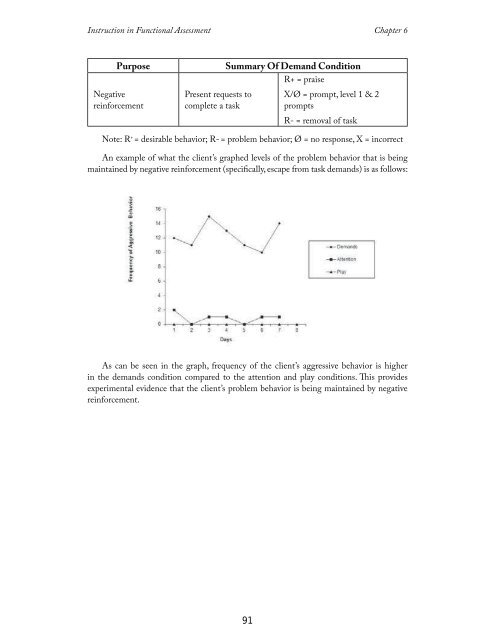Instruction in Functional Assessment, 2014a
Instruction in Functional Assessment, 2014a
Instruction in Functional Assessment, 2014a
Create successful ePaper yourself
Turn your PDF publications into a flip-book with our unique Google optimized e-Paper software.
<strong>Instruction</strong> <strong>in</strong> <strong>Functional</strong> <strong>Assessment</strong> Chapter 6<br />
Purpose<br />
Summary Of Demand Condition<br />
R+ = praise<br />
Negative<br />
re<strong>in</strong>forcement<br />
Present requests to<br />
complete a task<br />
X/Ø = prompt, level 1 & 2<br />
prompts<br />
R- = removal of task<br />
Note: R + = desirable behavior; R- = problem behavior; Ø = no response, X = <strong>in</strong>correct<br />
An example of what the client’s graphed levels of the problem behavior that is be<strong>in</strong>g<br />
ma<strong>in</strong>ta<strong>in</strong>ed by negative re<strong>in</strong>forcement (specifically, escape from task demands) is as follows:<br />
As can be seen <strong>in</strong> the graph, frequency of the client’s aggressive behavior is higher<br />
<strong>in</strong> the demands condition compared to the attention and play conditions. This provides<br />
experimental evidence that the client’s problem behavior is be<strong>in</strong>g ma<strong>in</strong>ta<strong>in</strong>ed by negative<br />
re<strong>in</strong>forcement.<br />
91


















